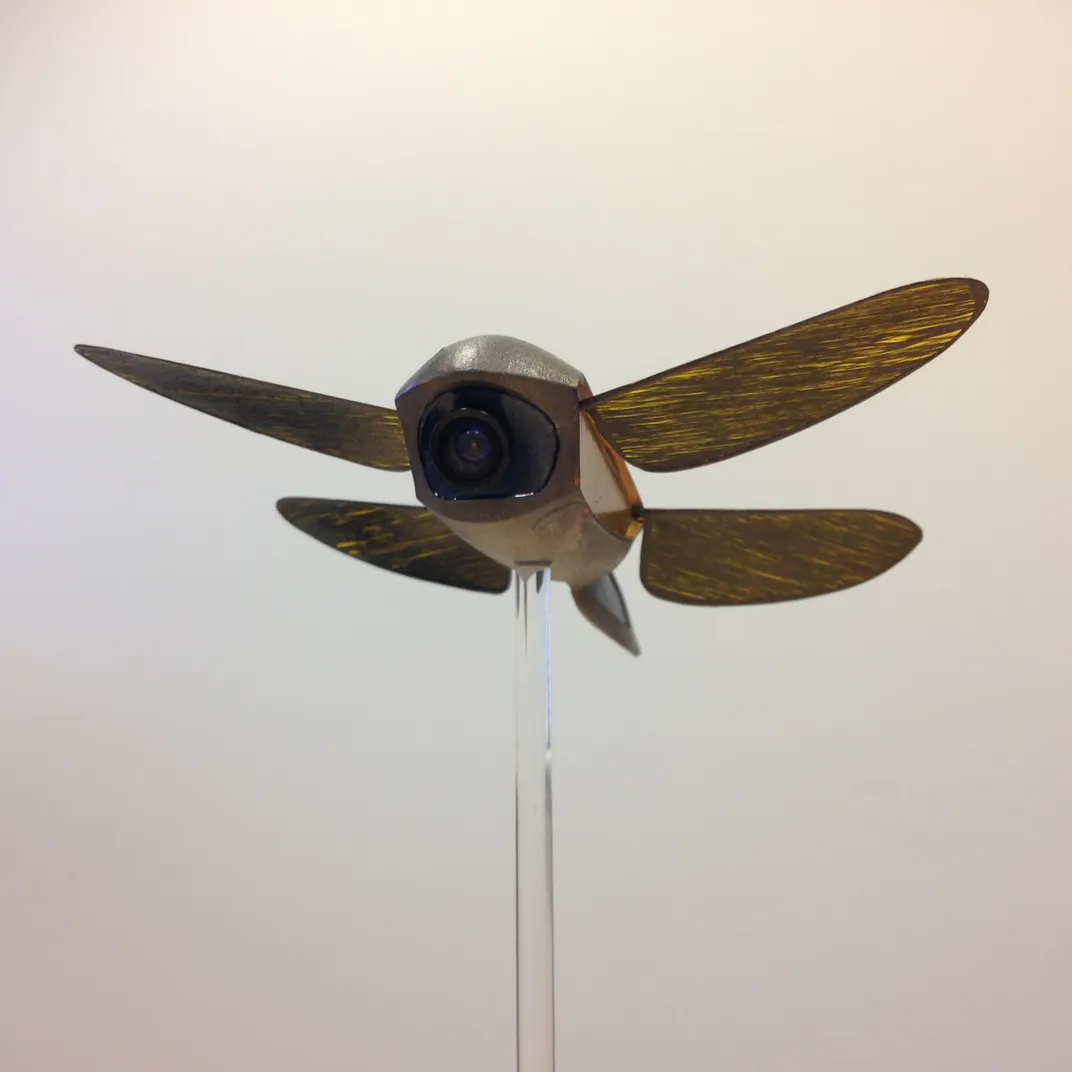Flap Like a Dragonfly
Bio-mimicry makes drones better.
/https://tf-cmsv2-smithsonianmag-media.s3.amazonaws.com/filer/d7/cb/d7cb3dd9-9069-4c74-b658-5f3ffab99051/dragonfly.jpeg)
When the United Kingdom version of DARPA asked Oxford Professor of Biomechanics Adrian Thomas to design a small drone for the British military, he looked to the insect world for guidance. The resulting aircraft, named Skeeter, is inspired by a dragonfly. And like the insect, Skeeter employs two sets of wings, and flight results from their flapping motion.
The fixed-wing drones most commonly used on the battlefield today have a major weakness: They can’t land. Staying in one place means circling above it, which takes energy and attracts attention. Compared to quadcopters, which can land and are now used in combat, Skeeter has a performance edge. “We’ve got two advantages,” says Thomas. “One of them is that [Skeeter] is fast. So it copes with strong wind conditions and turbulence very well. The other one is that it can glide. So if you cut the motors, it will glide very nicely with about an 8:1 glide angle, at about 10 meters a second. Pretty quick, actually.”
The largest known dragonfly lived over 300 million years ago and had a 30-inch wingspan. But other flying prehistoric creatures were vastly larger. “There isn’t an obvious physical limit to the upper size for flapping, flying animals,” says Thomas. Skeeter, however, weighs just one ounce and has a five-inch wingspan. “It sits in the palm of your hand. It’s so small that we have to paint them orange because I keep losing them in the grass.”
Thomas and his company, Animal Dynamics, turned Skeeter into a video-equipped surveillance UAV for the British soldier. “Ultimately, the aim is that at least every platoon has one, and ideally every soldier has one, so they don’t have to stick their head around a corner when they want to find out what’s going on.” To extend mission time, Skeeter will “perch,” meaning it will land and observe without flying. Like subspecies of dragonflies, Skeeters will be optimized for different mission sets, including the ability to hover, fly at high speed or transmit infrared video.

The tiny aircraft, says Thomas, was designed with mass production in mind. “The aim is to get these things down to a price where the soldier using them thinks of them as disposable as a grenade.” And deployable just as quickly.
Skeeter’s design has been drawing a lot of attention. “We’ve already been contacted by Chinese toy makers saying ‘can we please build the thing for you?’ ” The Israelis, says Thomas, called “offering their help.” He’s also heard from Korea, France, and the U.S. Marines. “We had long discussions with the U.S. Marines and they said ‘As soon as you get beyond small arms range, we get really interested in it.’ So we need well over a kilometer in range. And getting reliable radio control at 2.4ghz at a kilometer? You can forget it.” Citing government restrictions, Thomas won’t say what frequencies he uses.
Flying on a 5-gram battery, flight endurance would seem to be a real issue. But Skeeter's flapping aerodynamics provide a big break: “A similar sized quadcopter, you might get 20 minutes [of flight time]. We’re targeting an hour. If we could achieve the efficiency of a similar sized dragonfly, we’d be looking at multiple hours of operation.”
Thomas stresses that it’s critical to learn the physics underlying animal performance. “We’re not doing bio-mimicry where you copy biological systems. What we really focus on is trying to understand the fundamental physics underlying the performance the animals achieve. That’s the key thing: taking inspiration from biology and understanding it properly rather than copying it. Bio-mimicry leads you up all sorts of hideous dead ends.”